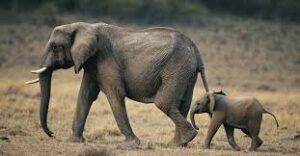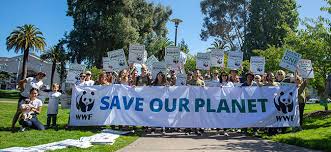Wild Animal Adoption Guide
Wild animal adoption is the process of supporting and caring for a wild animal that is living in captivity, often in a sanctuary or rescue center. Adopting a wild animal involves making a financial contribution to support the animal’s care and well-being, as well as learning about the animal and its natural habitat.
Adopting a wild animal can be a way to contribute to conservation efforts, as many animals in captivity are there due to injuries, abandonment, or other circumstances that make it impossible for them to survive in the wild.
By supporting a sanctuary or rescue center that cares for these animals, individuals can help provide them with the food, shelter, medical care, and enrichment they need to live a healthy and fulfilling life.
Wild animal adoption programs are often run by nonprofit organizations that specialize in animal rescue and rehabilitation, such as wildlife sanctuaries, zoos, or animal welfare organizations.
These organizations may offer a variety of adoption packages, which can include photos and information about the adopted animal, updates on its care and progress, and even the opportunity to visit the animal in person.
It is very important to note that while wild animal adoption programs can be a great way to support conservation efforts, they are not a substitute for efforts to protect natural habitats and prevent wildlife from being threatened or endangered in the first place.
Adopting an animal can be a meaningful way to make a difference, but it’s also important to support broader conservation efforts and advocate for policies that protect wildlife and their habitats.
Read Also: Methods of Harvesting of Plantain Bunches
Importance of Wild Animal Adoption

There are several benefits and importance of wild animal adoption, including:
Support for animal welfare and conservation: Adopting a wild animal provides financial support to organizations that are dedicated to the welfare and conservation of animals.
These organizations often use the funds to provide medical care, food, and shelter for the animals, as well as to support programs that help protect their natural habitats.
Education and awareness: Wild animal adoption programs often provide educational materials and updates on the animals to their adopters.
This helps increase awareness about the animals and their conservation status, and helps to promote a better understanding of their natural habitats and behavior.
Preservation of species: Many animals that are available for adoption are endangered or threatened in the wild. By adopting an animal, individuals can help support efforts to preserve the species and prevent it from becoming extinct.
Personal connection to the animal: Adopting a wild animal allows individuals to form a personal connection with the animal they are supporting.
This can be especially meaningful for people who are passionate about animal welfare and conservation, and can provide a sense of purpose and fulfillment.
Opportunity to make a difference: Adopting a wild animal is a concrete way for individuals to contribute to conservation efforts and make a positive impact on the world.
It allows individuals to take an active role in supporting animal welfare and conservation, and to see the tangible benefits of their contribution.
Wild animal adoption is an important and impactful way for individuals to support animal welfare and conservation efforts, while also fostering a personal connection to the animals they are supporting.
By adopting a wild animal, individuals can make a positive difference in the world and contribute to the preservation of some of our planet’s most magnificent and endangered creatures.
The Adoption Process
The process for adopting a wild animal may vary depending on the organization or sanctuary you choose to work with, but here are some general steps that are typically involved in the adoption process:
Research and choose an organization: The first step is to research and choose an organization that offers wild animal adoption programs.
Look for a reputable organization that is dedicated to animal welfare and conservation, and that has a good track record of providing proper care for the animals in their care.
Choose an animal to adopt: Once you have identified an organization, you can usually browse their available animals online or in-person. Look for an animal that speaks to you, and that you feel a connection with.
Fill out an adoption application: Next, you will need to fill out an adoption application. This will typically include personal information, such as your name and contact information, as well as information about the animal you wish to adopt.
Pay the adoption fee: There is typically an adoption fee associated with adopting a wild animal. This fee may vary depending on the organization, the animal, and the level of support you choose to provide.
Receive adoption materials: Once your application has been processed and your adoption fee has been paid, you will receive adoption materials from the organization. This may include a certificate of adoption, photos of the animal, updates on their care and well-being, and information about the organization’s conservation efforts.
Visit the animal: Depending on the organization and the animal, you may have the opportunity to visit your adopted animal in person. This can be a great way to deepen your connection with the animal, and to see firsthand the impact of your adoption. It is very important to note that adopting a wild animal comes with significant responsibilities, and that it is not a decision to be made lightly.
Be sure to do your research, choose a reputable organization, and be prepared to commit to providing ongoing support for the animal you adopt.
Cost of Wild Animal Adoption
The cost of wild animal adoption can vary depending on a variety of factors, such as the type of animal, the level of support provided, and the organization you choose to work with. Here are some factors that may influence the cost of wild animal adoption:
Type of animal: The cost of adopting a wild animal may vary depending on the species of the animal. For example, adopting a more endangered or rare species may be more expensive than adopting a more common species.
Level of support: Some organizations offer different levels of support for adopted animals. For example, you may be able to choose between a basic adoption package that includes a certificate and updates on the animal’s welfare, or a more comprehensive package that includes regular communication with the organization and special opportunities to visit the animal.
Adoption fees: Adoption fees can vary depending on the organization you choose to work with. Adoption fees typically cover the cost of caring for the animal, including food, shelter, and medical care.
Additional donations: Some organizations may ask for additional donations to support their conservation efforts or specific programs that benefit the animal you are adopting.
Also, the cost of adopting a wild animal can range from a few hundred to several thousand dollars, depending on the above factors.
It is important to carefully consider the financial commitment involved in adopting a wild animal, and to choose an organization that is transparent about its adoption fees and the use of the funds.
Risks and Challenges of Wild Animal Adoption

While there are many benefits to wild animal adoption, there are also several risks and challenges that individuals should be aware of before deciding to adopt a wild animal. Below are some potential risks and challenges:
Legal and ethical considerations: Depending on the type of animal you are adopting and the location of the organization, there may be legal and ethical considerations that you need to be aware of. Some animals may be protected by law, and it may be illegal to keep them in certain jurisdictions.
Additionally, it is important to ensure that the organization you are working with is ethical and follows best practices for animal welfare and conservation.
Financial commitment: Adopting a wild animal can be a significant financial commitment, both in terms of the adoption fee and ongoing costs such as donations and other forms of support. It’s important to carefully consider the financial impact of adoption and ensure that you are able to provide ongoing support for the animal you adopt.
Emotional attachment: While forming a personal connection with an adopted animal can be a positive experience, it can also be emotionally challenging if the animal becomes ill, injured, or passes away.
It is important to be prepared for the potential emotional impact of adoption and to ensure that you have a support network in place to help you cope with any challenges that arise.
Safety concerns: Depending on the type of animal you are adopting, there may be safety concerns that need to be considered. Some animals may be dangerous or pose a risk to human safety, and it’s important to ensure that you have the proper training and facilities to care for the animal safely.
Limitations on interaction: Depending on the organization and the animal, there may be limitations on the amount of interaction you can have with the adopted animal. This can be challenging for individuals who are looking for a more hands-on experience with the animal.
Additionally, while wild animal adoption can be a rewarding and impactful experience, it’s important to carefully consider the potential risks and challenges involved before making a decision to adopt.
By doing your research, choosing a reputable organization, and being prepared for the financial and emotional commitment of adoption, you can help ensure that the adoption is a positive experience for both you and the animal.
Read Also: Recommended Plantain’s Climatic Requirement
Where to Find Wild Animal near Me/You
Finding a wild animal for adoption typically involves working with a reputable organization that specializes in wildlife conservation and rehabilitation. Below are some places to look for organizations that offer wild animal adoption programs:
Local wildlife rehabilitation centers: Many communities have wildlife rehabilitation centers that rescue and care for injured or orphaned wildlife. These centers may offer adoption programs for animals that are unable to be released back into the wild.
Zoos and aquariums: Some zoos and aquariums offer animal adoption programs as a way to support their conservation and education efforts. While these animals may not be wild, they are often species that are threatened or endangered, and adoption can help support their care and conservation efforts.
National and international conservation organizations: There are many national and international organizations that focus on wildlife conservation and offer adoption programs for a variety of species. Some examples include the World Wildlife Fund, the Jane Goodall Institute, and the Wildlife Conservation Society.
Online adoption platforms: There are also several online platforms that connect individuals with organizations offering animal adoption programs. Some examples include Animal Adoption Agency, WildAid, and the Born Free Foundation.
When considering an organization for wild animal adoption, it is very important to research their reputation, transparency, and commitment to animal welfare and conservation. Look for organizations that are transparent about their adoption fees and the use of funds, and that prioritize the welfare of the animals in their care.
Read Also: Why Every New Parent Needs a Baby Carrier









